Buyers Guide to SDS Drills
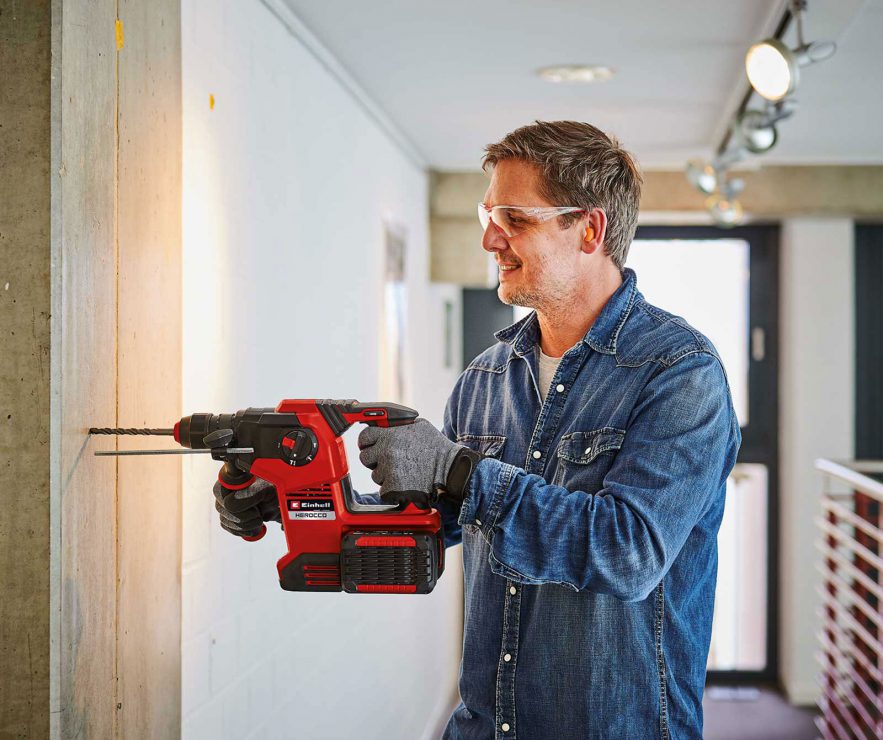
The hammer action you’ll find on a cordless combi drill or a traditional corded hammer drill gives you some extra drilling power when tackling masonry, but it does have its limitations. Come up against some especially tough concrete and you might feel like you’ve still got your work cut out for you when you’ve barely made a dent after several minutes of drilling. If you’ve found yourself in this situation, you’ll probably have seen that the recommended solution is something called an SDS drill – also known as a rotary hammer drill. But what exactly is an SDS drill and how do you go about choosing one?
The SDS Advantage
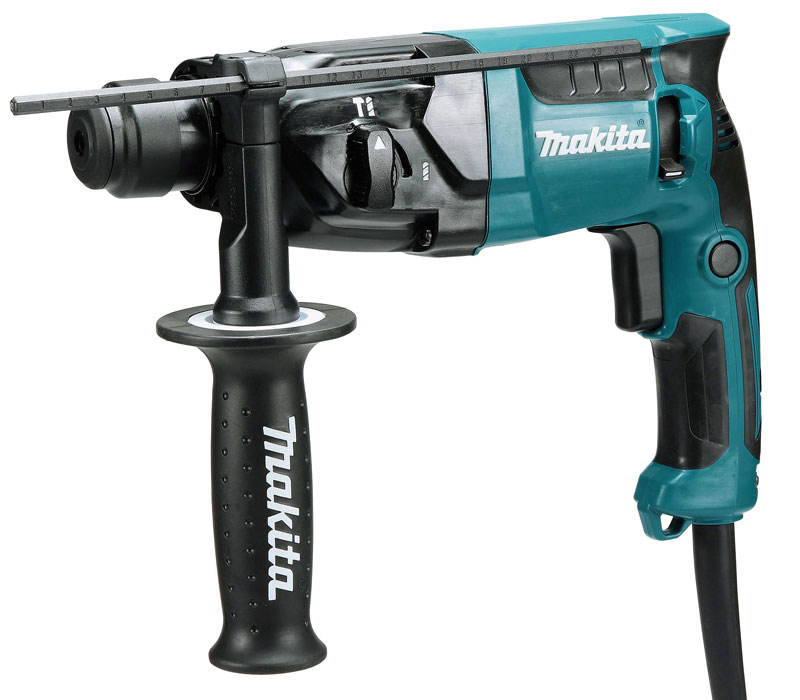
An SDS drill delivers a powerful hammer action which is extremely effective at drilling into hard materials like brick, stone and concrete. They were a game-changer for the construction industry as they greatly sped up many hole drilling processes, but this is not the only thing they were designed for. On most SDS drills you can switch the rotation off and set them to a hammer only mode – this sets them apart from regular electric drills and means you can also use them with SDS chisels for demolition tasks.
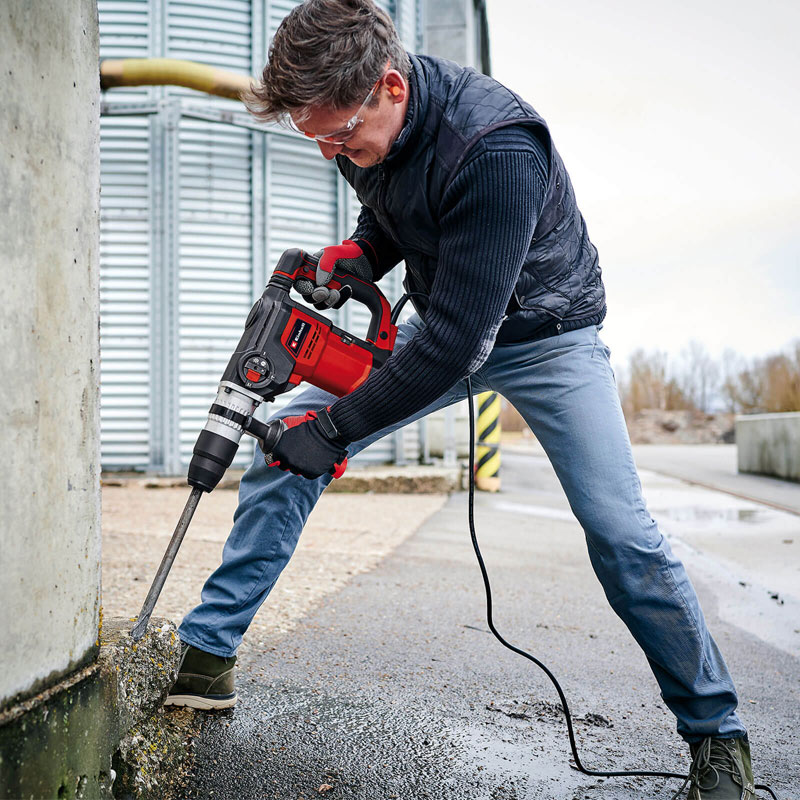
By the same token you can usually switch the hammer action off as well, enabling you to use the machine much like a regular drill when required. However, while they can be used for drilling into materials like wood and metal they are not particularly suited to it, and hammering is what they really excel at.
SDS Drill Types
SDS machines have a different type of chuck to what you’d find on a standard drill. This means they require purpose designed accessories, and normal drill bits can’t be used unless you can find a suitable adaptor. Since the system was originally developed in the 1970s, there have been four standard SDS configurations:
SDS. The very first SDS machines were known simply as “SDS” drills and used SDS accessories.
SDS Plus. Some minor design changes to the existing SDS design resulted in an upgrade to “SDS Plus” shortly thereafter. Designed to be backwards compatible with the original system, this is now the most common type you’ll come across.
SDS Max. For more heavy duty work, a larger type of machine was developed along with a corresponding SDS Max range of accessories.
SDS Top. For even heavier duty work, there is also an SDS Top system which is fairly uncommon.
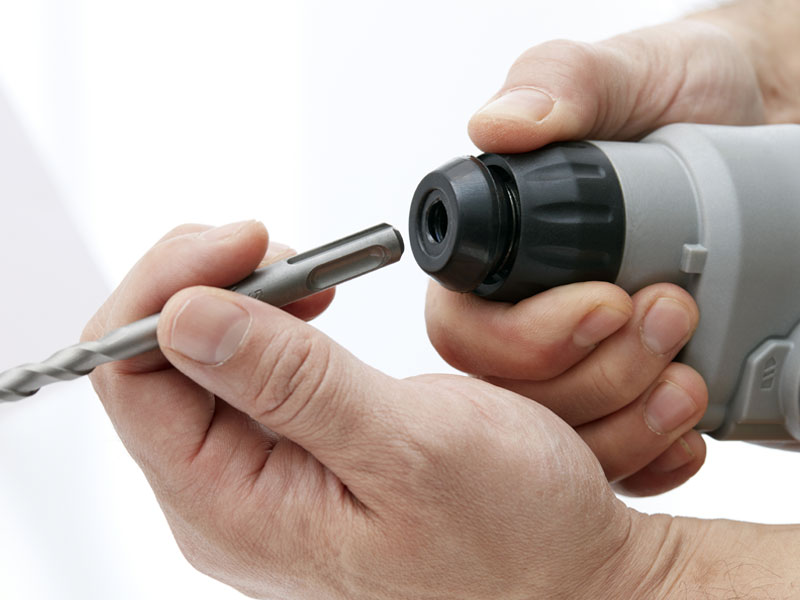
When people talk about an SDS drill these days, what they mean 9 times out of 10 is an SDS Plus drill. SDS Max drills are not uncommon, although most will be geared towards contractors rather than the DIY market. It’s important to note that if you have an SDS Plus drill, you can only use SDS Plus accessories, and likewise an SDS Max drill will only work with SDS Max accessories (although in the case of the latter, you can get an adaptor to step down to the smaller SDS Plus shank).
DIY or Professional
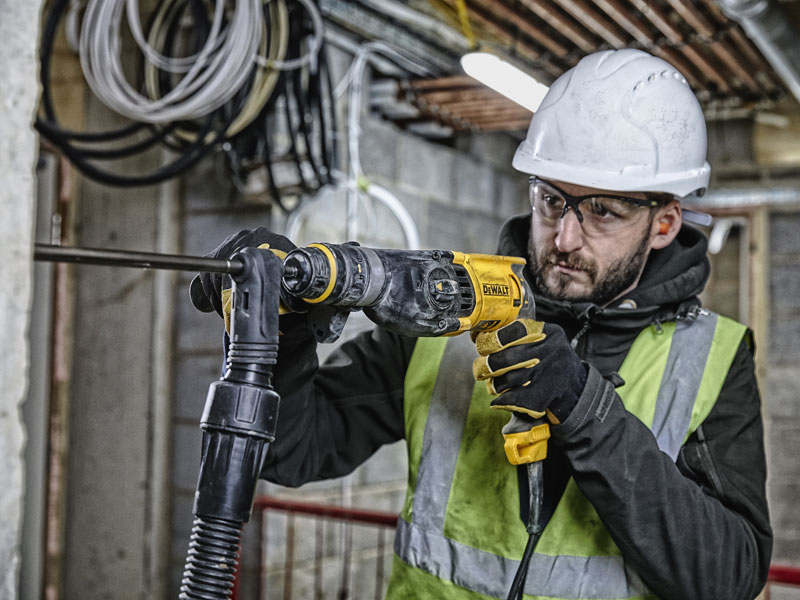
Power tools are generally split into two categories: those that have a warranty for domestic (i.e DIY) use. and those that have a warranty which covers professional use as well as domestic use. This doesn’t mean that the professional grade machines are necessarily going to give you better performance, but they should last a lot longer under demanding conditions. A DIY grade machine won’t be designed to withstand daily use on a building site, but for the odd job around the home it will be absolutely fine – and will cost you a lot less to buy. DIY grade SDS drills we stock here at Tooled-Up include those from Black & Decker, Bosch Green and Einhell, while the Professional grade machines include those from Bosch Blue, Dewalt, Makita and Milwaukee.
Corded or Cordless
If you’re buying a corded SDS drill, you may find it is available in 240v or 110v. The 240v option will be the one to go for if you’re plugging straight into a standard household power socket, but the 110v versions won’t work unless you have a suitable site transformer to plug them into (110v is often a requirement for safety reasons on jobsites).
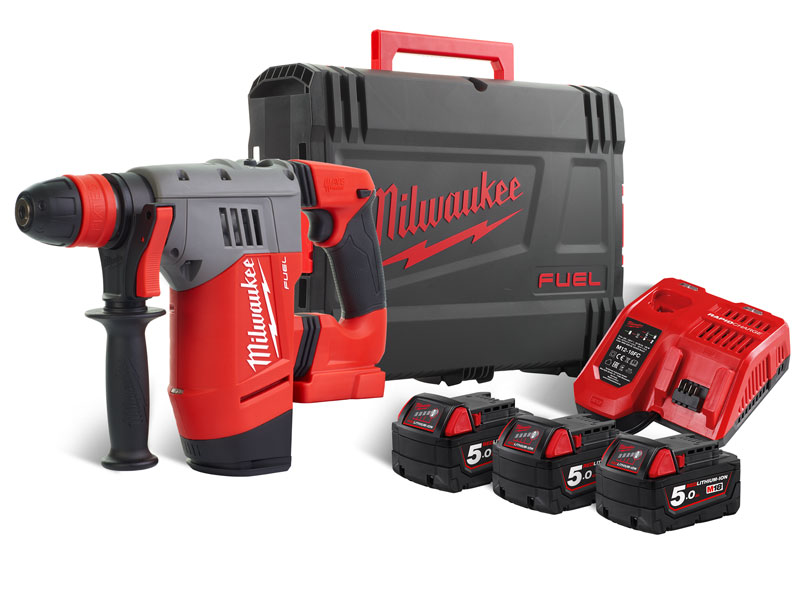
With a cordless SDS drill, you don’t have to worry about transformers, extension leads or any of that kind of stuff – you just have to make sure you’ve got the right batteries. Be aware that many of these drills are sold as bare tools, that is without battery or charger. This is great if you already own a suitable battery and charger, but not so much if you don’t – as you’ll then have to source them separately, usually at a higher cost. So take the time to check exactly what’s included in the box. If you already own cordless tools, and this includes everything from cordless lawnmowers through to cordless vacuum cleaners, there’s a good chance you might be able to find an SDS drill that runs on the same battery, so this is worth investigating too. If you are able to pick up a bare tool and use a battery you already own, its a win-win in terms of both cost and convenience.
Available Modes
SDS drills can do various combinations of rotating and hammering, including rotation only (drilling), rotation plus hammer (hammer drilling) and hammer only (chiselling). If a machine has three modes, then it probably gives you those three options.
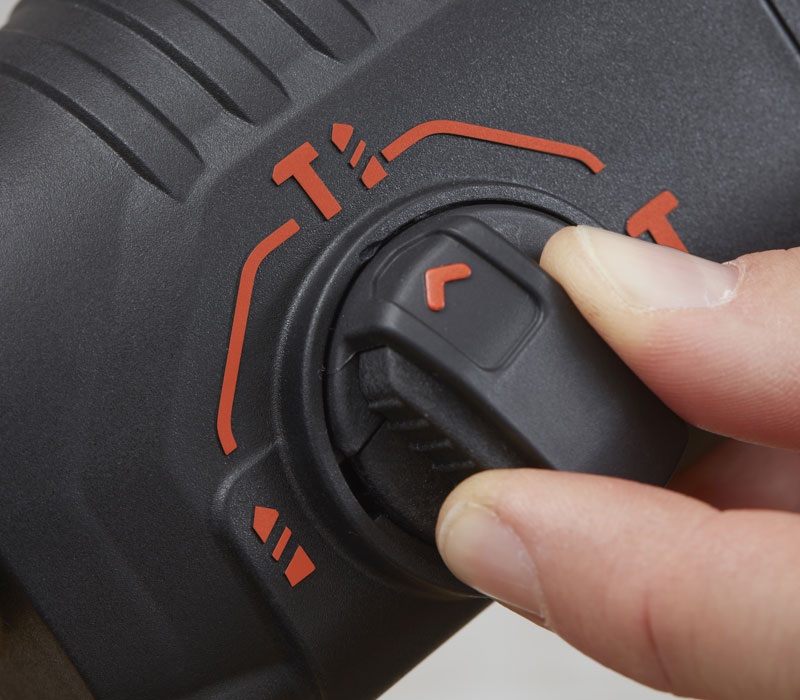
Commonly however what you will see is a four mode SDS drill and this has an additional setting for locking chisels in the required position. Where this comes in handy is if you need to use a flat chisel, for example the type that you might use for taking tiles off a wall. The ability to spin the chisel around in the chuck and then lock it in place means you can then get to work without having to hold the machine in an awkward position. Not every SDS drill gives you this option, and it’s less common on older models, but it’s useful to have it.
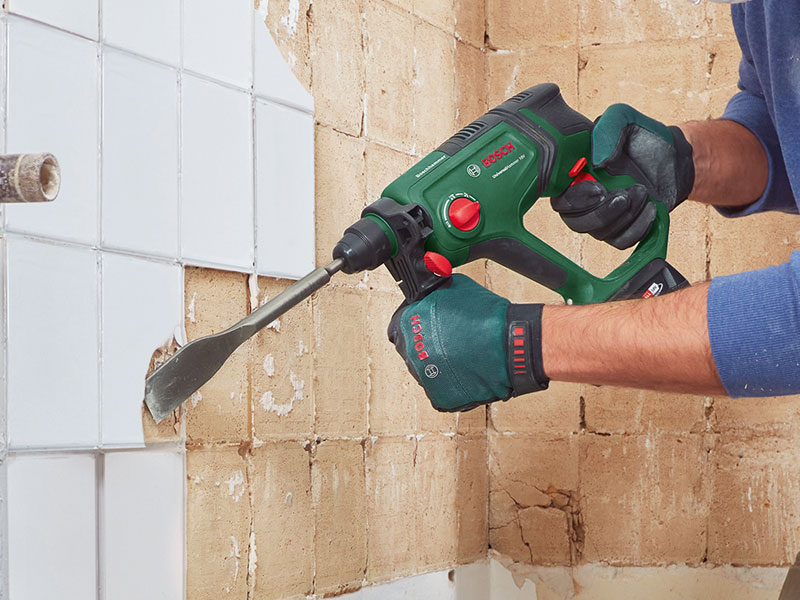
Some SDS machines don’t have a rotation mode at all, and are made purely for chiselling, in which case they will usually be described as demolition hammers or power scrapers.
Safety Clutches
Under certain circumstances, the accessory you’re using might get jammed: the classic scenario occurs when a drill bit hits metal reinforcements buried inside concrete, but there is also an increased risk with accessories like diamond cores. The problem is that if the accessory gets truly stuck then the machine itself will want to spin around instead – it will do this suddenly, and with enough force to cause serious injury to the person holding onto it. A powerful SDS drill is perfectly capable of breaking your wrist or knocking you off a ladder when this happens, so it’s bad news.
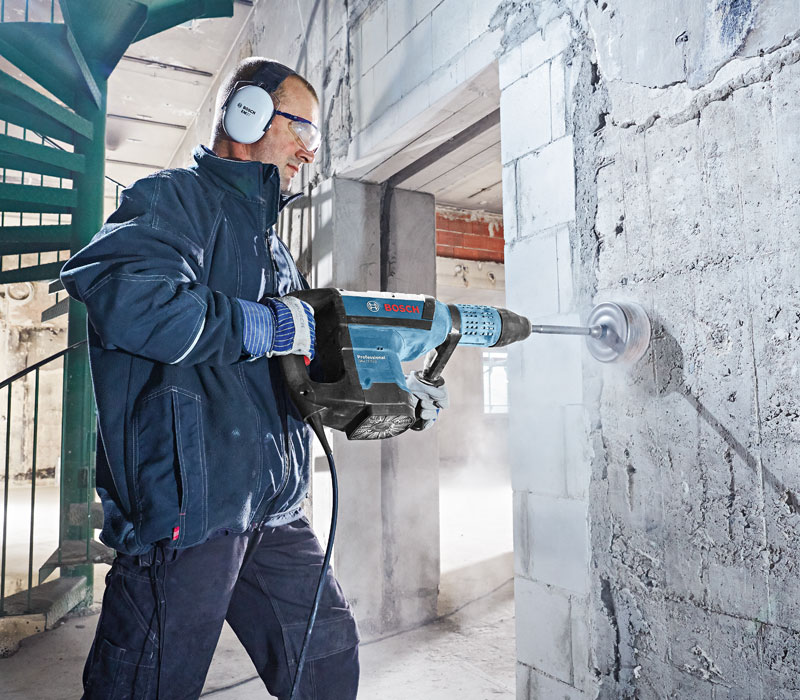
To mitigate this risk many SDS drills have a built-in safety mechanism, often known as a safety clutch, slip clutch or torque limiter. These safety systems are all designed to prevent the drill from spinning around in the event of a jam, and they can really help reduce the risk of a nasty injury.
Anti-Vibration
A less immediate health risk comes from subjecting yourself to long periods of hand and arm vibration: something which may occur if you’re doing lots of chiselling and hammer drilling. While this might just be a bit unpleasant if you’re doing a one-off DIY job, you can get long term health repercussions if you’re doing it all the time. To limit the amount of workplace vibration exposure and to improve user comfort, many SDS drills feature anti-vibration technology. Often the main handle will be partially decoupled from the motor to limit the amount of vibration travelling to the trigger finger, and this is why you see lots of SDS drills made in an “L” shaped design.
Quick Change Chucks
As mentioned at the start of this article, SDS drills aren’t usually the first choice for drilling into metal or wood. Partly this is because they tend to be a bit larger and heavier than other drills, and tend to run at a lower speed, but another problem is that SDS drill bits for metal or wood are virtually non-existent.
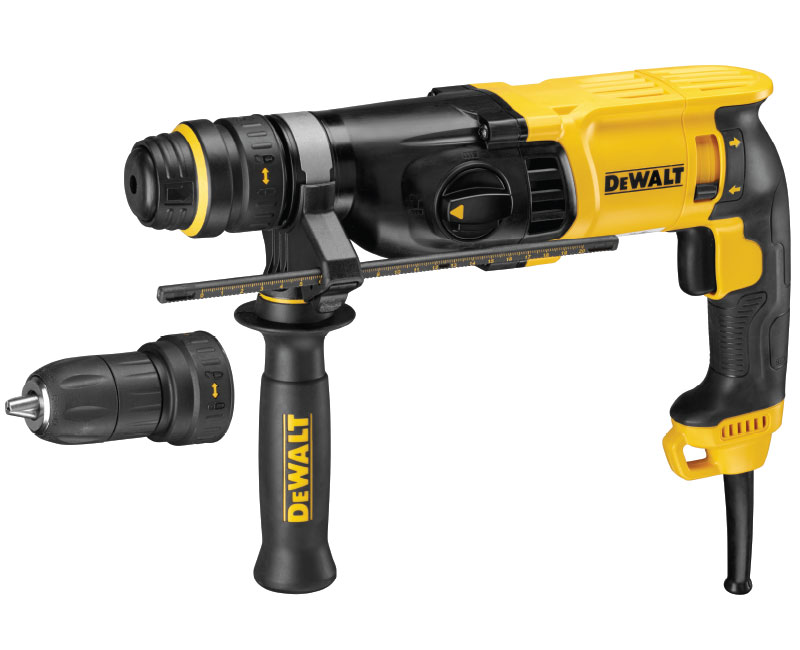
To get around the second issue, some machines feature an interchangeable chuck system which enables them to be used with either an SDS chuck or a standard drill chuck. Quickly and easily swapped over whenever you want to switch between them, this enables you to use a huge range of accessories without having to carry a separate power tool with you. A less sophisticated but still viable solution is to use an SDS chuck adaptor which has an SDS shank and simply slots into the chuck like a drill bit. Note however, that most of these are not suitable for use in hammer mode.
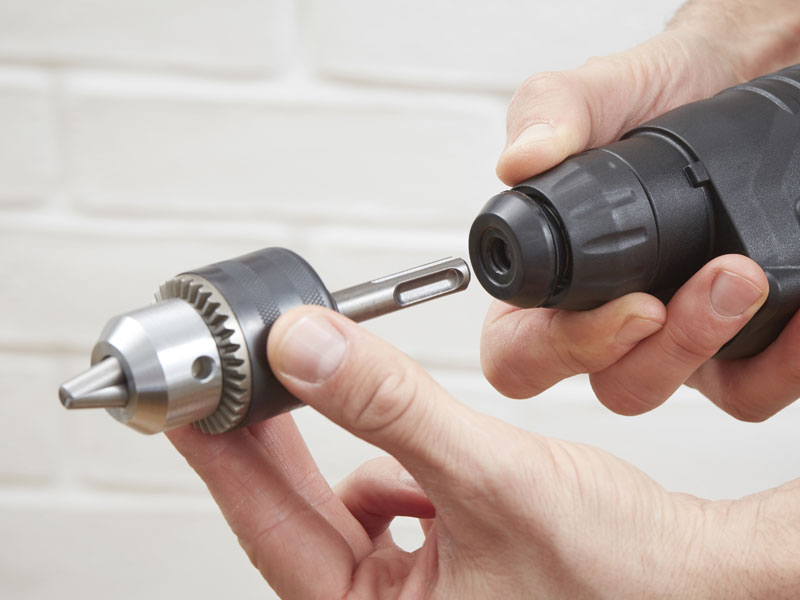
Safety and Recommended PPE
As with all drilling machines, eye protection should be worn whenever using an SDS drill as they can generate a lot of airborne debris. Much of this debris is bad for your lungs so you want to take steps to control it wherever possible. Silica dust is recognised as a real health problem in jobsite environments and most professional SDS hammer drills on the market can be fitted with dust extraction attachments to limit the amount that gets released into the surrounding area. Hammer drills can be loud so ear protection should be worn, and a good pair of gloves are recommended to help provide a secure grip on the tool and protect against minor scratches and scrapes while using it.
Categories mentioned in this article:
